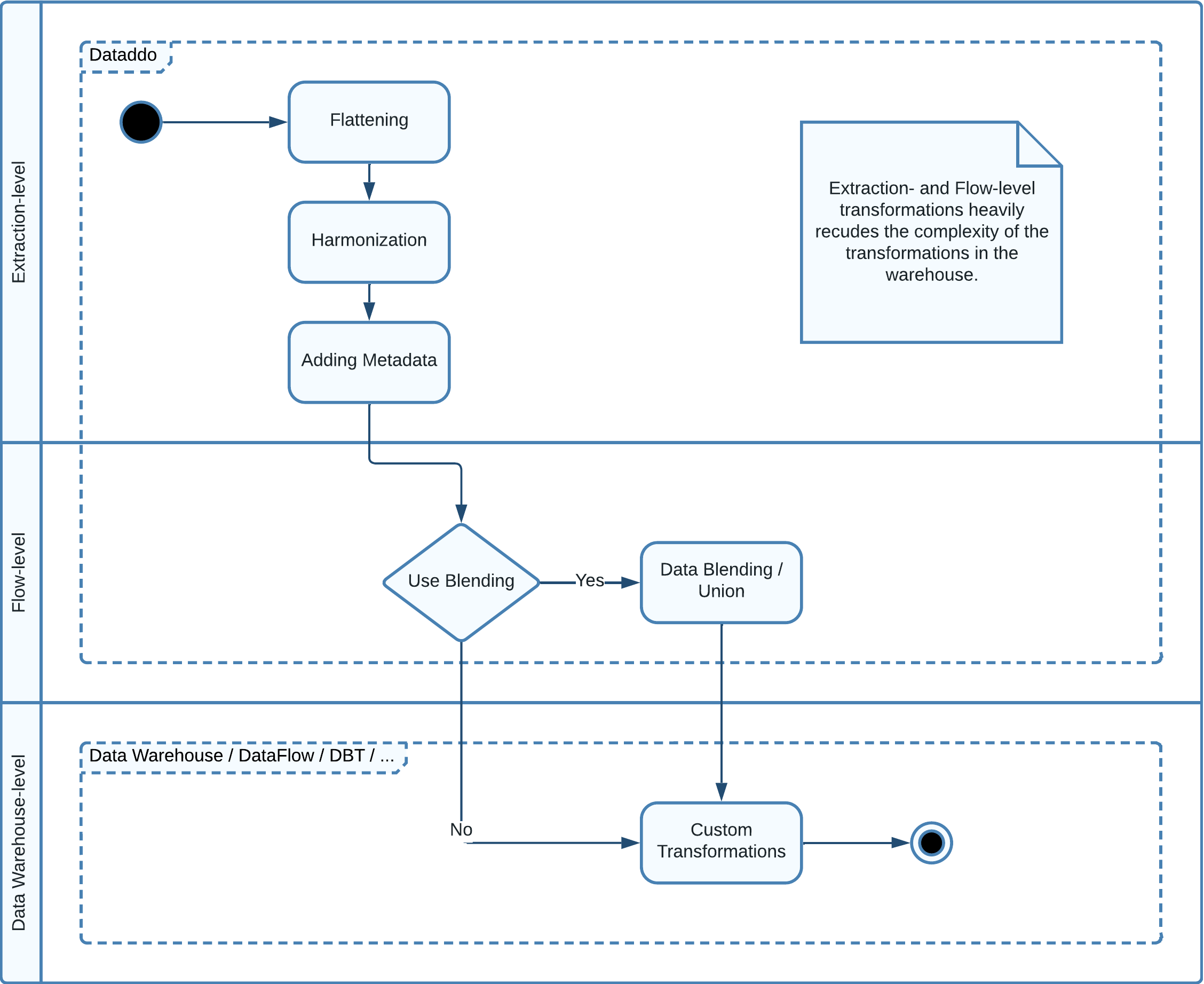Dataddo offers various data transformation techniques. This article explores our data transformation features, helping you prepare data for dashboards and more complex transformations.
Multi-Layered Approach to Data Transformation
To offer a strategic balance between automation and flexibility, Dataddo has a multi-layered approach to data transformation. You can transform data on the
This structured method reduces the need for extensive transformations at the data warehouse or final destination stages. By tackling key transformation tasks early in the process, it ensures that data is consistently analytics-ready, regardless of its origin. This not only simplifies the data integration process but also accelerates the journey from raw data to actionable insights.

Extraction-Level Transformations
Dataddo automatically performs extraction-level transformations, ensuring no-code, analytics-ready data. These include:
For custom extraction requirements, Dataddo offers universal connectors like JSON Universal Connector or CSV Universal Connector.
Data Flattening
Raw data is commonly in nested or hierarchical formats. Dataddo simplifies nested data from APIs into a tabular format, enhancing the no-code user experience. This ensures a seamless no-code experience for users, allowing for quick and efficient data integration.
Data Harmonization
The data harmonization process standardizes data formats, ensuring seamless integration into analytics tools. To address data discrepancies, Dataddo:
- Converts dates to consistent formats.
- Ensures that numerical values align with the correct data type.
Metadata Inclusion
Dataddo offers adding meta-information like the Dataddo extraction timestamp to your data. Metadata is crucial for tracking Slowly Changing Dimensions (SCD) and understanding the lineage of data.
PII Exclusion and Hashing
The option to exclude or encrypt personally identifiable information (PII) ensures data security and compliance.
You can opt to:
- Fully omit the inclusion of PII.
- Include PII and use hashing to convert it into a unique string of characters, allowing analysis without compromising privacy.
Flow-Level Transformations
Data Union
Data union combines datasets from multiple data sources. It operates similarly to the UNION operator in SQL.
To use data union, ensure that all sources have identical schemas, including the same number of columns, column labels, data types.
Data Blending
Data blending integrates data from multiple data sources based on common identifiers or keys.This approach combines complementary data from different sources to form a single view, similar to the JOIN operator in SQL.
To use data blending, make sure both datasets have a common join key.
Destination-Level Transformations
At the data destination-level, transformations depend on the platform's capabilities.
- Data warehouses typically offer a broad array of transformation tools, from aggregations to pivots, thanks to their robust data processing capabilities.
- Dashboarding applications may emphasize visual transformations for analytical presentation.
While Dataddo delivers data in an analytics-ready format, users should familiarize themselves with their destination's transformation tools to maximize its utility.